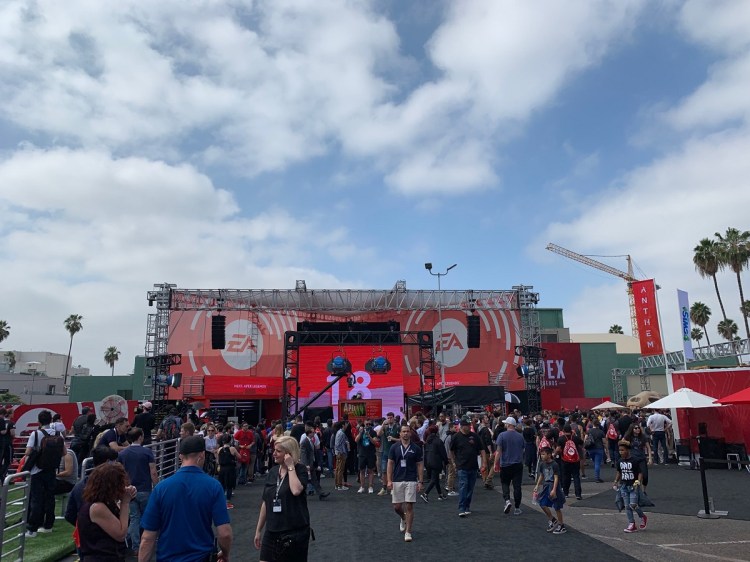A year ago, Laura Miele moved from head of global publishing at Electronic Arts to chief studios officer at the video game giant. She is in charge of EA’s global collection of 20 studios with thousands of game developers at places like EA Tiburon, BioWare, Respawn, and DICE.
Those studios create games that generate billions of dollars in revenue, and Miele rose through the ranks at EA in both development and publishing roles. She has overseen the studios in a tumultuous period, with the high of the success of Respawn Entertainment’s Apex Legends, and the low of the poor launch of BioWare’s Anthem.
I caught up with Miele at EA Play, the company’s big fan event in Hollywood over the weekend ahead of the Electronic Entertainment Expo. We talked about her changing role at EA and the lessons of big launches such as Anthem, which didn’t go well, and Apex Legends, which turned out spectacularly. We also spoke about diversity, the evolution of gamers,
Here’s an edited transcript on our interview.
June 5th: The AI Audit in NYC
Join us next week in NYC to engage with top executive leaders, delving into strategies for auditing AI models to ensure fairness, optimal performance, and ethical compliance across diverse organizations. Secure your attendance for this exclusive invite-only event.
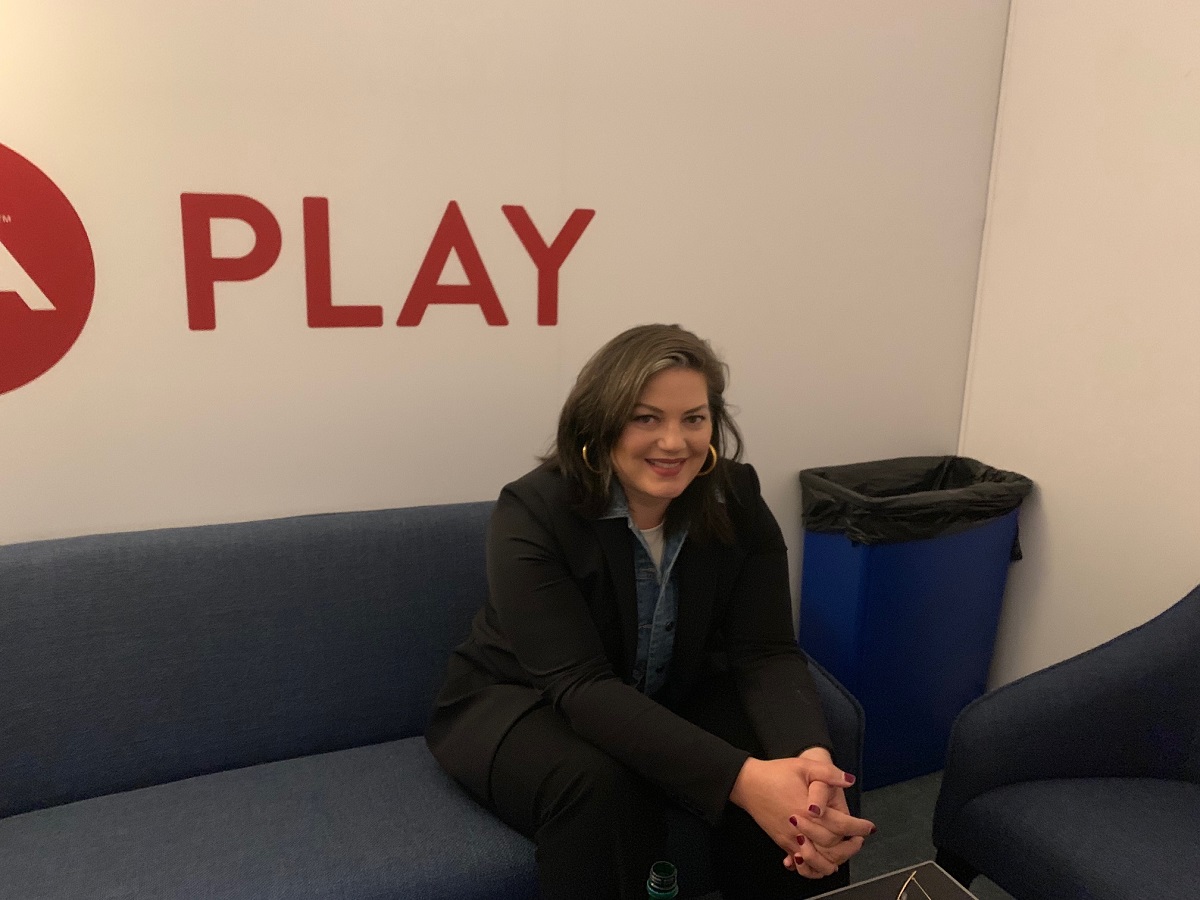
Above: Laura Miele is chief studios officer at EA.
GamesBeat: How are you doing?
Laura Miele: It’s a fun time of year. It’s a big inflection point for us, to pull together all of our content for the year and, at EA Play—historically Gamescom was always my favorite trade show or conference, because it was about the players. That we’re able to bring that to life here with EA Play is pretty fun. I get a lot of meaningful insights from being here and watching our players, talking to players, talking to influencers about how we’re doing, what we could be doing better, what’s exciting to them. I quote them all year through, so now I have a fresh batch of quotes for the year ahead. [Laughs]
GamesBeat: Have you been running all the studios for about a year now? What do you reflect on as far as what’s happened in that time?
Miele: Yeah, a little over a year. It’s been a pretty eventful year for us. It was a good year in many ways, and it was also a year that we learned a lot of things. For me, at least, it will potentially go down in history as a big inflection point for us as far as how we think about creating player experiences for the future and what our thresholds are for quality and how we create the best environment for our game creators. I learned a tremendous amount from what we put on the market.
We saw some great successes. We learned from some experiences that played out a different way than we wanted to. But it was a good year. I chalk it up as a great year. We learned a lot and it’s setting the foundation for our strategy in the future.

Above: Cal consults with Saw Gerrera, the rebel rebel.
GamesBeat: When you think about the beginning of that, the transition itself, was it a challenging transition? How would you describe the process of taking over?
Miele: It was incredibly interesting. I’ve been with the company for 23 years. I’ve had a lot of positions in marketing and the business side, analytics, data. I ran Star Wars. Ultimately I started in a studio. I started at Westwood. I worked on Command and Conquer and ran our online teams there. For me, coming back into the studio organization has been a bit of a full-circle moment, though certainly at a different scale.
The transition process for me was to go deep into our studios and our leadership teams. My first 100 days, I toured all of our studios. I went to more than 20 studios around the world and spent time with the teams. I had rules about—they weren’t allowed to present a Powerpoint to me. We spent just a bit of time on the games, but we really spent time talking about the creative process, talking about what’s working well and where we want to see improvement. It helped me tremendously to go in deep and learn and be part of the—to assess the process and spend time with our people and get to know what motivates them and how they see our players.
I also spent time with our game influencers and some of our players. I was able to take the insights and conversations and help that shape and form our strategy for the year ahead. I wanted to come in as if I hadn’t been at the company for 23 years. It was important for me to learn and be very open to hearing and receiving insights and information about our games and our company and our processes. It was incredibly interesting and a lot of fun in a lot of ways. I learned a lot about what’s going well, how we approach our game creation, what our players think of us, and what they would like to see from us – the things they love about what we do and the things they’d like to see us do differently. It’s been great.
GamesBeat: Did you get any instructions or advice from Andrew as to what your mission is, what needed to be done? Was there a mandate of any kind, or was it more exploratory?
Miele: Andrew is probably one of the most inspired leaders I’ve ever worked with. He’s not a prescriptive manager. He’s an inspired leader. He helps me think about our strategic frameworks, our strategic vision. He helps me think about how to manage my own energy and my own time to be the most effective leader that I can be. He helped me lead at scale, which he does incredibly well. He helped me think about and refine our strategic framework and streamline the communication of that to our organization. He also inspires me to think about innovation in the future, that we dare to show up and be disruptive in the marketplace. That’s where he’s pushed me.
As I say, he’s not a prescriptive leader. “Step one, we’ll do X, and step two, we’ll have this new plan.” That’s not how he operates, and I’m grateful for that. He’s pushed me to be a stronger leader. Candidly, I’ve been at the company for 23 years, and I know a lot about the games business. I know a lot about our players and our marketplaces. It’s really about how to lead a creative collective of thousands of people to be the best versions of themselves, to show up for our players in a way that gets us to great games. That’s where he helped me in spades.
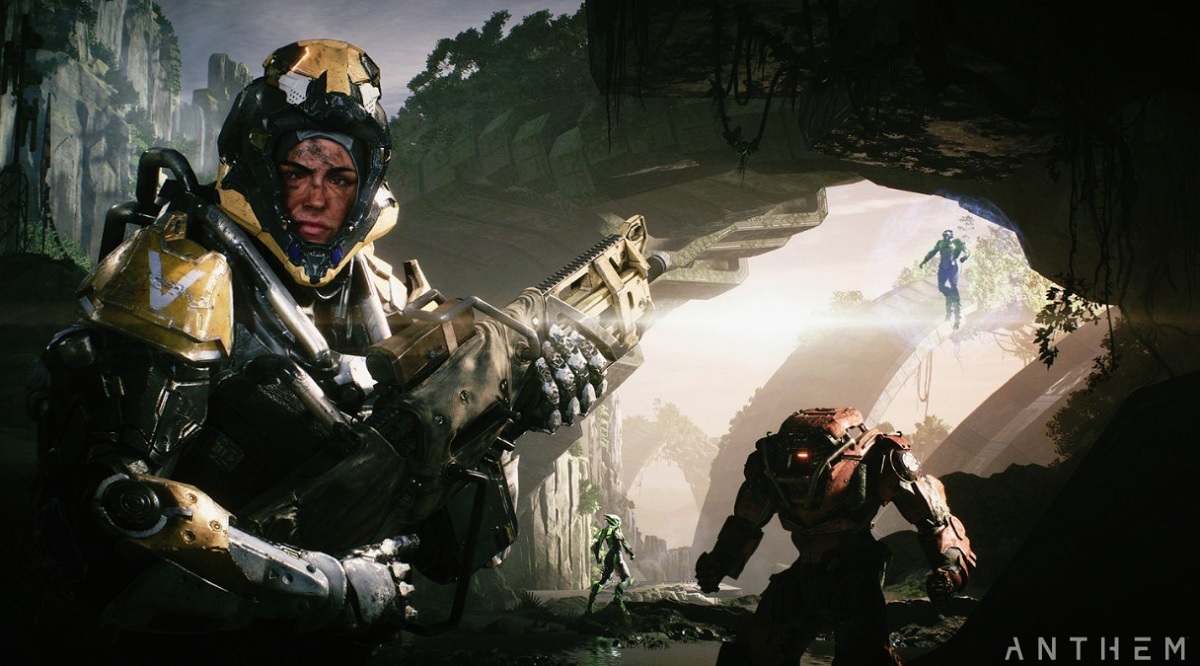
Above: Four-player co-op is a lot of fun in Anthem.
GamesBeat: Can you help us understand what decisions you might own, as opposed to what the studios would do or what Andrew would have to decide?
Miele: I believe in having great talent, the best talent we can possibly have. There have been leadership changes in the studio organization over the past year. I believe we have an incredibly strong leadership team in the studio organization today. My job is to empower them. They’re executive vice presidents and senior vice presidents, so they’re empowered to provide creative direction, to kill their games, to greenlight games. They’re at a high level, not just within EA but within the industry overall. They’re leaders with decades of experience in making games.
My role is to inspire them and to remove barriers and to enable the collective to come together. I really see myself as someone who’s creating a framework for them to do their best work and be the best versions of themselves. We’ve created things like a creative council. Vince Zampella, who runs Respawn, he’s leading a creative council for the organization that is akin to the brain trust as far as creativity. We allow teams to come present their games to them, and he gives feedback. The teams don’t have to take that feedback, but they get the benefit of him and craft leaders across our studio organization to get these amazing insights about their game.
That’s the power of being part of EA and having 20 studios and all of this creative experience, bringing that to bear for individual studios and teams. Those are the types of programs that I’m putting together in the studio organization to bring the teams and the best creative thinkers to help each other push beyond the boundaries that any studio would have by themselves, sitting in a remote location. They’re getting the benefit of that. I don’t sit in on those meetings. We don’t have executives sit in. It’s purely creative. Again, the teams can take the feedback if they want to or not.
Another example is that we’re bringing the studio organization together as a team. We’re doing peer reviews on games. The teams and studio leaders are playing each other’s games now, which didn’t happen before. Again, I believe in the power, the creativity, and the leadership we have in the studio organization. My job is to bring them together so they can be a multiplier for each other.
I set strategy for the studio organization, for the areas of innovation that we need to pursue, for the generations of players that we need to meet in the marketplace. I work with our partners across the studio organization and across the company – marketing and the CTO organization – bringing their strategies together with our strategies to ensure that we’re meeting the company goals. Andrew sets strategy for the overall company, innovating in how we’re thinking about five years from now and where we’re guiding the company, the business strategies.
And then of course, as you would imagine, there are some black-and-white, binary buckets I’m talking about, but we communicate and talk. The strategy that Andrew sets for our subscription, for our player network in the future—we talk about the games we’re creating. I’m a very transparent leader as well. I want as many people seeing the games we’re creating and getting excited. We have the company advocating for what we’re doing. The company is truly inspired and excited about the content we’re creating.

Above: Apex Legends started with a phenomenal launch.
GamesBeat: I see some things from the outside that look interesting. I wonder how you think about them, or could summarize what happened. There’s the question of whether to use Frostbite or use the team’s engine of choice. How do you look at that, especially over the past year?
Miele: Frostbite is a powerful engine. The vision I’ve set for the studio organization is that I want it to be the ultimate destination for game developers to make great games. In order for us to be the ultimate destination, we have to have the best tech and the best tools to use. As an example, Respawn has come into EA and into the organization, and they’re using different engines.
Where I am right now, I’d like for teams to make sure that we have the right technology, the right engine to optimize their ideas and their creativity. The technology needs to be a supporter and a catalyst for the game ideas and the creativity from the teams. That said, you have a franchise like Battlefield that’s been on Frostbite for its entire life cycle. The game teams know the engine well. They know how to optimize the engine. They have a ton of content that’s compatible with the engine.
I continue to believe in Frostbite as a strategy, but it’s not something we’re forcing on teams that aren’t currently on it. I think that we have to create better accessibility to the engine. We’ve doubled resources in the last six months, and will in the coming year, to build better workflows, interfaces, and tools for the teams to access it.
I love Frostbite, because I think it positions us for the future. The interfaces, workflows, and tools that we create to better access that will unleash the power that will take us into the future that’s going to be—I think Frostbite is going to be needed to realize the potential of technology in the future. I’m optimistic about it, but yes, we have work to do on the accessibility of it for the people that work on it. That’s something we’ve prioritized, and we’re shifting resources toward it. We’re working aggressively against that.
Whether it’s something that—as I mentioned earlier, I don’t believe in mandating or prescribing what teams have to do. But I believe that we’ll be in a position where Frostbite will earn people’s business within the company. I’m excited about that. I believe in the power of the technology.
GamesBeat: What about the success of Apex and the contrast with Anthem? From a management point of view, what actions become necessary based on what you saw there?
Miele: They’re different games and different paths. I’m incredibly proud of Apex, and I’m happy with the independence and disruptive thinking and strategy from the Respawn team, and how our teams internally partnered with them. Not only to help them bring it to market, but also to be disruptive with the marketing and communication in how we brought that to market. We wanted to be disruptive at every turn, on every front, and surprise and delight our players.
The method in how Respawn got to Apex has been interesting to learn from, and how they develop games. Vince is a passionate believer in getting games stood up as soon as possible. The idea that the Apex team was playing that game for about 18 months, every day, before it came to market is something that I think is a great discipline and a great approach. It goes back to the days when I was at Westwood, where it was the same way. We’d stop working at about four o’clock every day and play the game for a couple hours, play our own game every night.
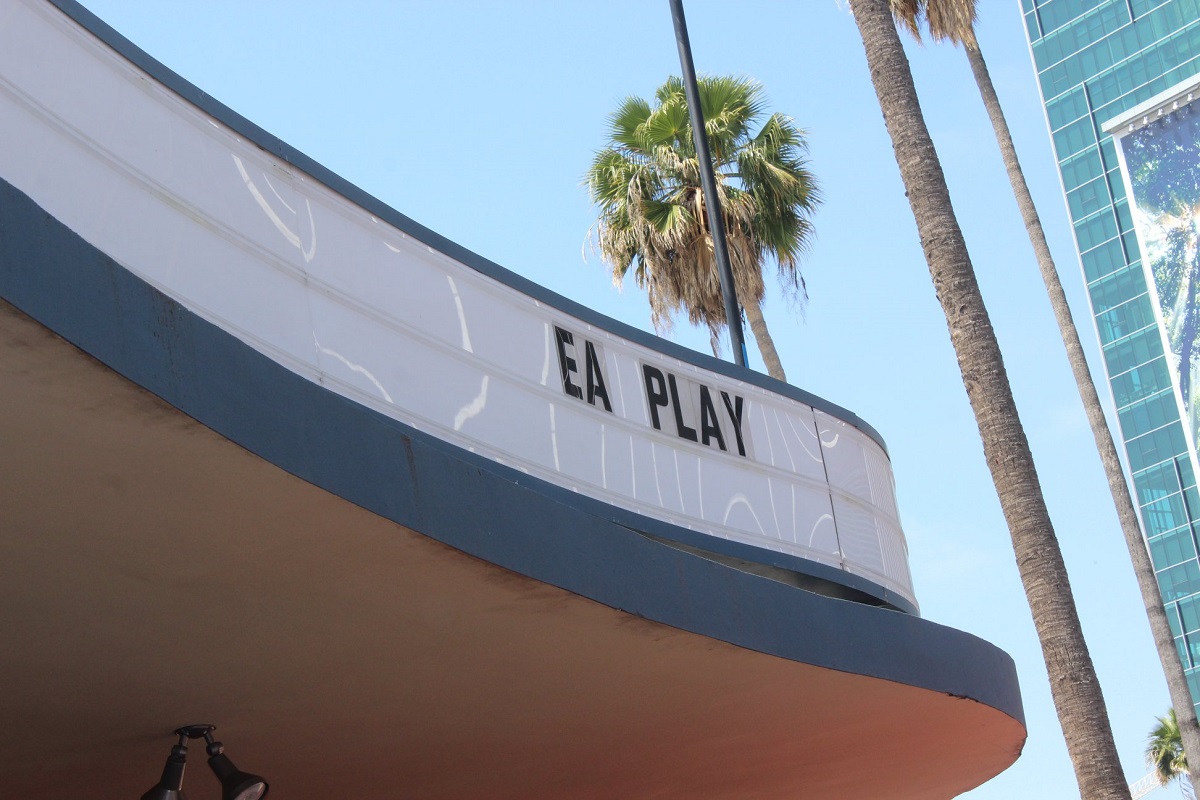
Above: EA Play 2019 had lines going around the block at the Hollywood Palladium.
That’s how games become great. It’s how you understand the nuances and the implications of design choices that you make and how that plays out in real gameplay with real players. That was a great learning and insight from the success of Apex. Clearly that’s a different scale relative to Anthem. This is a map with eight characters and a mode in the game. But they’ve done incredibly well. Their process and methods to get there is something that we’re learning from. We can all take from their success there.
When I look at Anthem, it’s actually a similar situation, in that a similar approach would have been a big benefit to us with Anthem. Anthem has many systems. It’s an incredibly large world with a lot of characters, a lot of story. A very different scale and different depth and dimension of game development relative to Apex. But what we had in the game—all the parts of the game came together later than they should have. We should have had that game stood up and playable a year before we came to market, and we didn’t.
That’s been one of the most significant pieces of learning for me, in that we’re going to have longer alpha periods. We’re probably going to start bringing players in sooner. One of the other complexities around a game the size and scale and scope of Anthem is that it’s comprised of systems, and when you need a volume of players, a million players to come in and test these systems to understand the implications and outcomes of the combination of these systems, you’re not going to get to that in a closed environment with a QA group internally.
You’ll see us start going out for betas—remember MMOs, that would have the beta and then launch? We’ll start rolling out programs like that, so we can test these systems and get to the scale of testing we need to polish and respond and better perfect the gameplay. A couple of really critical learnings, and some things that we learned as we had the success of Apex, some things we learned as we went to market.
The marketplace is changing. The interesting thing right now is we go out with brand new games against games that have been in live service for years. They have a tremendous amount of content. They’ve been polished and perfected and responding to players. Getting the benefit of that from a community through our development cycle is something we’re going to launch and kick off.

Above: EA Play 2019 is a fan event ahead of the Electronic Entertainment Expo (E3).
GamesBeat: What about looking at the industry at large? You have the annualized games like Call of Duty, and then there are things like Red Dead. Every seven years, 2,000 people. How do you look at where you want to be on that spectrum?
Miele: EA’s strategy is to inspire the world to play. The world is a big, diverse place. I think we’re going to have to have diverse content and diverse offerings. Not to be too hyperbolic about it, but we’ll probably have all of the above, I would say. We’ll have annual offerings. We’ll have games that take us six years to create. We’ll have single-player story offerings like Fallen Order. We’ll have small independent games.
Where the world is headed with services and subscriptions, it’s actually going to liberate us to create small indie story games. It will allow us to create large epic experiences that may take us five or six years. We’ll have annual offerings and iterations on live services in games. I’m optimistic that we’ll be able to diversify in the future, more than we ever have, based on how the business models are changing. The idea that we’re not contained in a $60 packaged good anymore is going to open things up for us. It’s exciting for game developers and it’ll be great for players. I’m optimistic about diversifying and thinking differently about our content.
We’ll explore. We’re creating new IP. We’ll bring back some old brands and some old IP, so stay tuned on that. I think we’ll be able to expand out and diversify our offering not only in genres and gameplay styles, but in our brands and stories and characters in the games themselves.
GamesBeat: There are six games here at EA Play, right? I think back to 2008, when you had something like 60 games in the year. Do you feel you’re in a good place on that front? Or do you think you should have more coming?
Miele: What I love about EA’s position in the marketplace is that content is king, and the future will reward the company, the publisher that has the best content and the most diverse content offering. I don’t see our portfolio as seven or eight games, because we have so many games that are on live services. I look at the teams that are dedicated to games and how our teams and people are allocated against these projects and against our player base. We have a lot of games that are actively live right now, being worked on and having new content created.
Could we add more teams or acquire companies into our portfolio? Yes. I’d love for us to continue growing our content offering. But I don’t have a scarcity mindset about what we currently have, because we have so many games, whether you look at our mobile games or our high-def games in services, plus we’re creating a lot of new content.
GamesBeat: It seems like you almost have more brands than you need right now.
Miele: EA has an abundance of great brands. Again, having been with the company for a long time, I have a real love for some of the brands that we’ve worked on in the past, that we’re evaluating and would like to potentially bring back for a new generation of players. Plus, we have to create new brands and new IP as well. Balancing both of those is going to be important for us.

Above: Battlefield V is getting some new, beautiful locations.
GamesBeat: If you go back to what some of your style is, and what’s emerged now, do you think it’s different from the previous management, different from Patrick in a big way, or different from the way EA has done things in the past?
Miele: We’ve shifted quite a bit in how we manage our studio organizations over the years. As with anything, it’s dependent on the strengths of any given leader. I believe, as we were talking about the diversity of content and the diversity of our player base, just how many generations of players we develop for—we have baby boomers and Gen X and millennials and Gen Z all coexisting in the same game experience. That’s a lot of different motivations and needs we have to meet as game creators.
I believe that with the diversity of the marketplace and our players and content, I think you need diversity in your creative leaders. My approach and style is to ensure that we have not just a great cross-section of creative leaders and talent, but that they have unique experiences in their respective genres and respective players. That’s where we’ll get to great at a larger scale, get to great for more players across more markets and more generations and more genres.
I don’t believe in a singular person directing all creative for all games, all players, and all markets. I love the idea of creative diversity. My greatest opportunity is to bring those creative people together where they inspire each other and become a multiplier in what we’re creating – not just for our players, but for the people who create the games themselves. They feel like they have a career-defining experience being at EA, because they had exposure to all the resources we have, the creative leadership we have, and the great tech and tools we have.
Most companies in our industry, even some of the larger ones, don’t have central tech or teams coming together and partnering and working together like we do. We’re a large company, so it can feel cumbersome sometimes, but for me, I believe it’s the biggest advantage that we have to unlock. It can be one of the biggest assets and experiences a developer can have when they come to our company. My job is to unlock the benefit of that.
I believe in enabling and having diverse creative leadership, so they work together and help each other and lift each other up in their respective genres, with their respective player bases. They help us disrupt and innovate and push the boundaries.
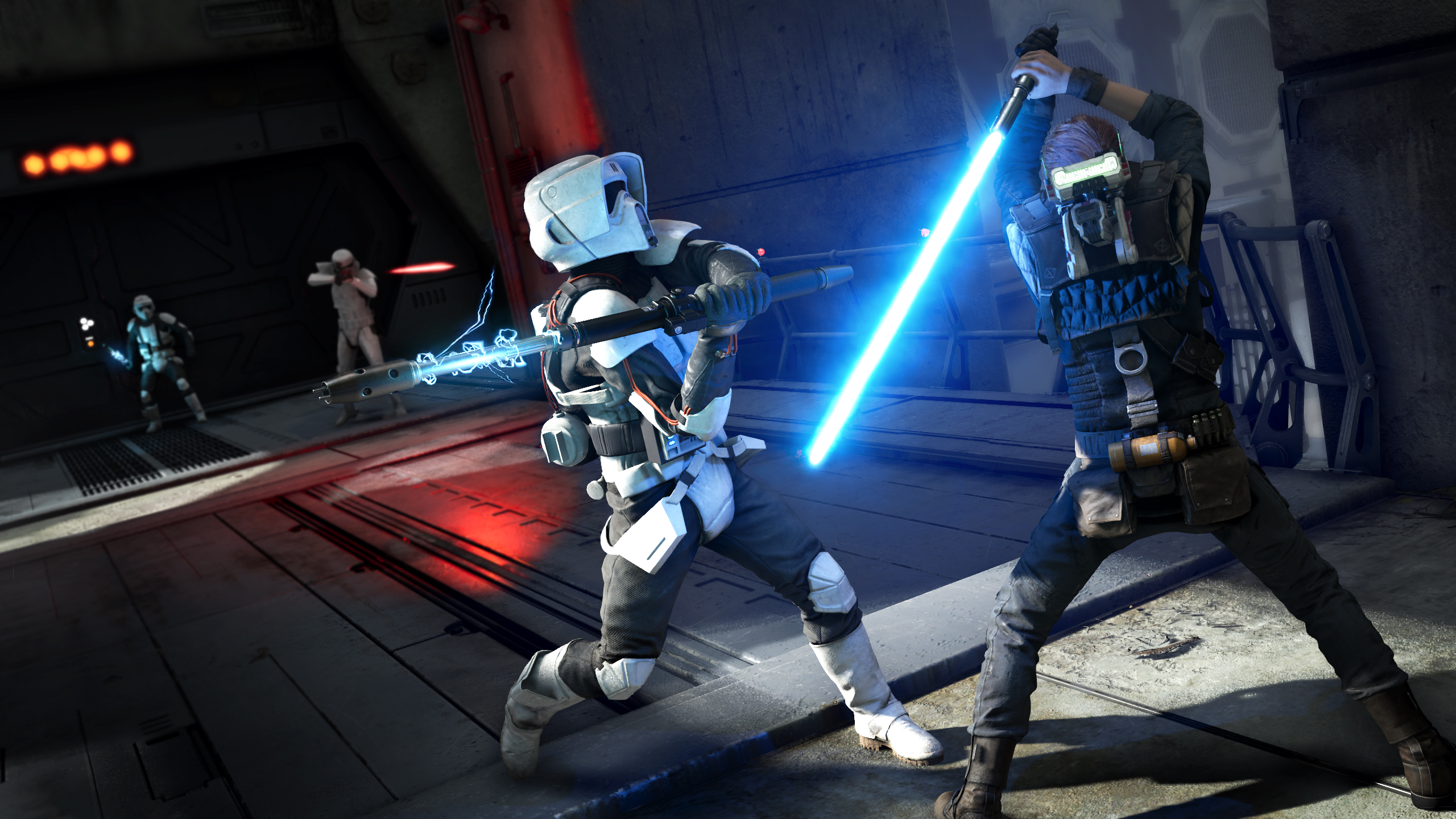
Above: Don’t bring a stick to a lightsaber fight.
GamesBeat: Your arrival at this management style is interesting in that—the players seem to be changing a lot, too. I wrote a story about the latest Call of Duty, saying that I think the level of graphic realism in the violence is not going to make it fun. I got thoroughly ratio’d on social media by core players who said, “This is what we want. This is exactly what we want. We want something edgy. We don’t want it censored.” I get the feeling that they don’t like the words “mainstream” or “diversity.” I don’t know if it’s the right word, but they want things to be more hardcore. I guess the larger question would be, what is happening with players? They don’t seem to be the way they used to be.
Miele: It’s an interesting time for us as content creators in entertainment. As I mentioned, there are four really different generations that we’re creating for. You look at a Gen Z relative to a Gen X or baby boomer, they have really different motivations and needs.
When I talk about diversity in content, I’m not talking about an individual piece of content necessarily. I’m talking about a portfolio strategy for Electronics, to have diverse offerings, to meet the motivations and needs of these players. But the idea that we would have a Battlefield, as an example—I’m not looking to necessarily have the team take that in a direction where it’s diverse and mainstream. It’s really about meeting those players where they are.
I think there are some interesting trends coming from millennials and Gen Z in that they want agency. They want to have an impact on their gameplay, where the decisions they make have an outcome that’s different than someone else playing that same game. They want to have more user-generated content. They want to modify their game experiences more than perhaps Gen X or older players. Meeting those players’ motivations and needs while still having the core foundation of the game compulsion and the game objectives and the game challenges is something that’s a big opportunity for us in how we think about game design and game development.
Social interaction, what we see with Gen Z players—it’s interesting. We just did a research focus group. We were talking about this idea of bringing community in earlier, into the games, what I was mentioning about where we wanted to have more players come in early to a game like Anthem. We were testing this idea, seeing how players would feel about it and how we would want to serve that to them. Gen Xers were saying, “No, I just want to do it by myself. I want to be able to brag to my friends that I’m playing this. I don’t want anyone else to know. I want exclusive access to this, and then be able to tell people about it.” The Gen Z people, meanwhile, said, “No, I want to bring all my friends in so we can come have this experience together.”
It’s nuanced and subtle, but it’s important. They all want somewhat different things. The idea that we create environments and opportunities to have those emotional needs met in these entertainment experiences, I think, is our opportunity. It’s super interesting.
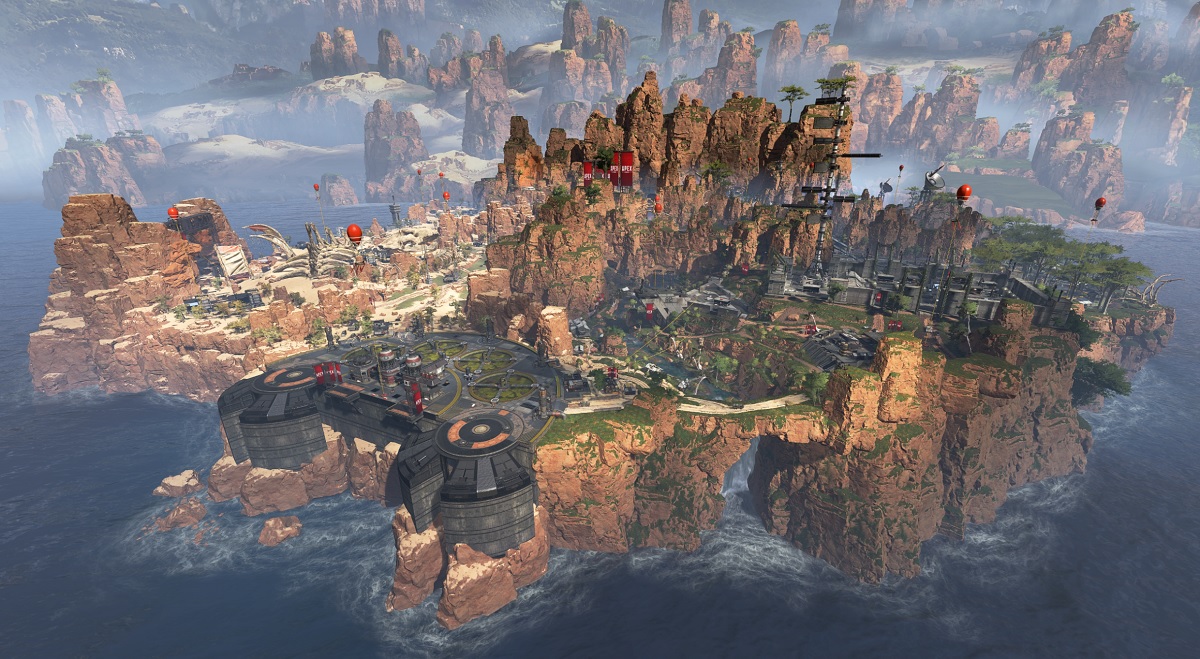
Above: The Kings Canyon battle royale map in Apex Legends.
GamesBeat: Do you think we’re pushing toward a world of more user-generated experiences? Or do you think something else is what these people want?
Miele: I think players do want curated entertainment experiences. I really do. There’s a big audience of players that want to be immersed and entertained. I just think that are opportunities for us—Battlefield is a good example. We had the War Stories in Battlefield, which are emotional, engaging, and very connected to players. But some players want to create or impact a map in different way, where they can bring their friends in and create challenges, and that’s where we have to explore a new opportunity. How do we allow people to adapt their experience in these environments as well?
